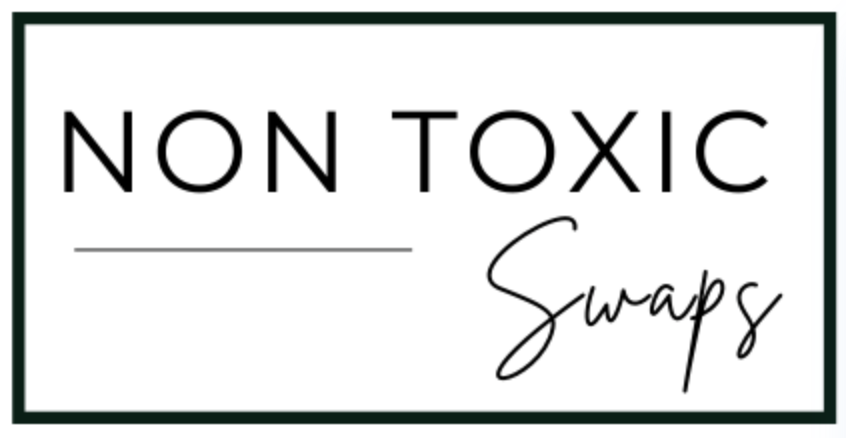Last Updated on March 21, 2025 by NonToxicSwaps
If your hair spray contains fragrances and toxic ingredients, your hair is a walking diffuser! Swap out your toxic hair spray for a non toxic hair spray!

Affiliate disclosure: As an Amazon Associate, we may earn commissions from qualifying purchases from Amazon.
Even though your hair products are sprayed on the hair and not the skin, you’re still being affected by inhaling its ingredients. Your hair becomes a walking diffuser of artificial fragrances and other toxic chemical ingredients. This affects you and those around you! Not to mention the lasting scent in the air of your home after applying.
If your styling products contain harmful ingredients, it’s time to make the switch to a natural hair spray.
Ingredients to Avoid in Hair Spray
Most hairsprays today contain ingredients that help create an effective product. But these ingredients can be harmful to our health. Big brand hairsprays are made up of polymers, solvents, and a propellant. If a product must be used in “well ventilated areas”, you’ve got to wonder…what happens if you don’t?
Here are some ingredients to avoid when shopping for a safer hairspray:
- Isobutane: asphyxiant, cardiac effects in severe cases of inhalation, can effect nervous system, potential carcinogen & genotoxin (PubChem ID: 6360)
- Fragrance/Parfum: umbrella term including hundreds of toxins, including hormone disrupting phthalates, as well as skin irritants and allergens. Chemicals that are hidden behind this term can be carcinogenic, respiratory irritants, endocrine disruptors, reproductive toxins, neurotoxins, and more (PMID: 35669814)
- Parabens: preservatives linked to endocrine disruption (PMID: 29596967), known to be carcinogenic due to endocrine disruption (PMID: 36746253) Parabens may be listed as methylparaben, ethylparaben, propylparaben, butylparaben, isobutylparaben, isopropylparaben, and benzylparaben.
- Ethoxylated ingredients (PEGs, PPGs, polysorbates, ceteareth, phenoxyethanol): ethoxylation process produces ethylene oxide, a carcinogen and developmental toxin (PubChem CID: 6354) and 1,4-dioxane, a suspected carcinogen (PubChem CID: 31275)
In fact, studies have shown that professional hair stylists have experienced health issues after repeated exposure to toxic hair products. Hair spray was found to be one of the main culprits causing respiratory issues! Check this out from PubMed article, ““Hair-spray lung”. Clinical and morphological findings”
While occasional exposure to hairspray is nowhere near the exposure of a professional hairstylist, unvetted products contain irritants and carcinogens. Consistent exposure to these ingredients is unsafe.
“Prolonged and excessive exposure to hairsprays could be established in both cases. Upon termination of the exposure, a marked improvement occurred in both patients within half a year. Extreme exposure to hairspray may cause alterations of the lung parenchyma, including a so-called “hair-spray lung”.” [Source]
Check out more Non Toxic Swaps recommendations in the guides below:
NON TOXIC PERSONAL CARE GUIDES
- Toothpaste
- Hand Lotion
- Deodorant
- Men's Deodorant
- Body Lotion
- Body Wash
- Bar Soap
- Non Toxic Valentines’ Day Self Care Guide
Hair Care
Skin Care
NON TOXIC HOME GUIDES
NON TOXIC MAKEUP GUIDES
NON TOXIC BABY GUIDES
- Baby Laundry Detergent
- Baby Wash
- Baby Sunscreen
- Baby Diapers
- Baby Wipes
- Baby Lotion
- Baby Safe Paint for Cribs
- Eczema Cream for Babies & Kids



